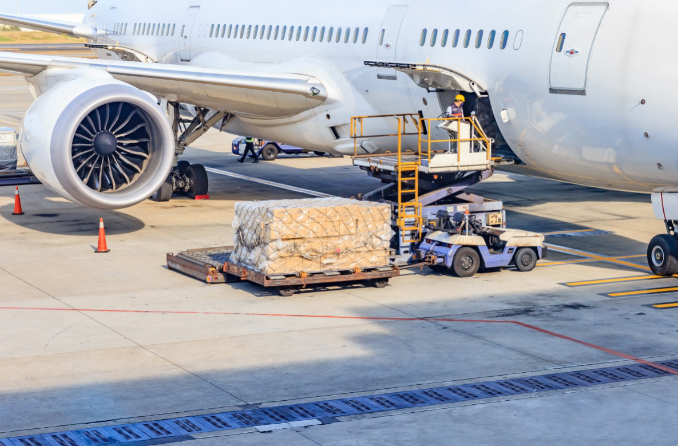
The global air freight sector is expected to grow by 15% this year as companies seek out alternative modes of goods transport to avoid supply chain disruption.
It is expected to grow from $56.48bn in 2020 to $64.98bn in 2021, with a compound annual growth rate (CAGR) of 11% to 2025 when the market will be worth $100bn.
This is according to new market research by the Business Research Company that underlines how the sector has grown in response to the impact of Covid-19, the recovery and the global shipping crisis.
Air advantage
Despite air freight prices now being two-and-a-half times higher than pre-pandemic levels, some companies are turning towards it in response to disruption in the sea freight sector, which has even higher freight costs and more disrupted delivery times, reports the Telegraph.
With the holiday season here, companies are using air freight to make sure stock arrives on time. Delivery from the Far East by air is around five days end to end, compared with multiple weeks by ship.
Costly
However, retailer Next warned earlier this month that the cost of flying freight was eating into its margins.
Toy company Ty has spent $225m flying Beanie Babies in from China to avoid gridlocked ports.
‘Permanent shift’
Other companies are looking at air freight as a longer-term option. Earlier this year, Amazon bought its first fleet of planes, reports the BBC.
Maersk is looking to build air freight capacity as part of efforts to broaden its supply chain offering. It is buying Senator International, a Hamburg-based freight forwarder that operates around 19 flights a week.
It also plans to expand its own fleet with three leased planes for next year and is set to buy two new Boeing 777 aircraft that will be in action by 2024.
‘Permanent shift’
Airlines shifted their focus towards cargo when lockdowns saw passenger numbers plummet at the height of the pandemic. Cargo previously represented about 10-15% of carriers’ revenues, but this has risen to about a third.
Willie Walsh, director-general of the International Air Transport Association, said this represents a “permanent shift” towards cargo.
Marco Forgione, director-general of the Institute of Export & International Trade, agrees.
“I think you can be sure that behaviours are going to change as a result of what's happening now,” he told the Telegraph. “What that actually means and what the results of that will be, it’s too early to tell.”
‘Robust’ demand
DHL Global Forwarding predicts that demand for air freight will remain “robust” into next year.
Indraneel Chatterjee of DHL told Lloyd’s Loading List that ongoing uncertainty surrounding the Covid-19 pandemic and its impact on global trade would benefit air freight.
“The surge is not restricted to any particular (business) sector and so with manufacturers busy with inventory restocking we may continue to see demand at such high levels,” he said.
Staff shortfalls
The surge in air freight comes against the backdrop of staff shortages in the UK’s road freight sector.
James Wroath, the chief executive of Wincanton, said the shortages are likely to continue into 2022.
He warned the FT of a “scrap” to secure lorry drivers for the peak retail season and said subcontractors were charging as much as 40% more than last year for HGV drivers, making peak delivery periods for Black Friday and Christmas extremely challenging.
Optimism
However, and end may be in sight, he said.
“The publicity around the pay is attracting more candidates. We’re more optimistic,” he said. “The whole issue is going to take six to 12 months to really flow through to have enough resources.”



